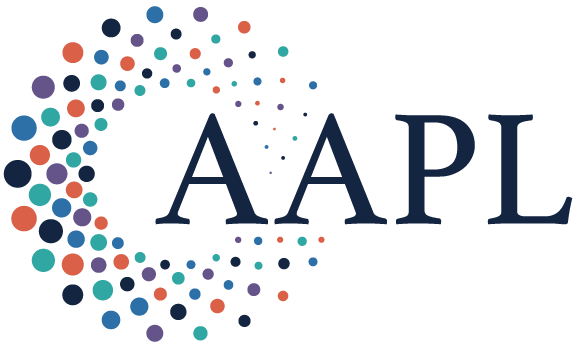Nearly every physician and anyone involved in the healthcare profession agrees that the American healthcare system is ailing. It is expensive, accounting for $4 trillion spent annually and 18% of the gross domestic product.(1) We may have the most expensive healthcare system on the planet, but we do not have the outstanding outcomes and longevity compared with other Western countries. Our patient satisfaction scores are decreasing, with patients having difficulty accessing care. Unfortunately, we have paid more attention and money to focus on the most complicated diseases while paying insufficient attention to the needs of patients with more common ailments, such as diabetes, cardiovascular disease, cancer, and neurodegenerative disorders.
Disruptive innovations are radical changes that often overturn the usual way of doing things to such an extent that they have a positive ripple effect throughout the industry.
A potential solution to the sickness of American healthcare is for all the players to embrace disruptive innovation. This will make healthcare less expensive and more convenient, with better outcomes and improved patient satisfaction scores. Healthcare systems that embrace these disruptive innovations will be profitable, stemming the financial hemorrhaging that is exsanguinating the healthcare system and making the current system unsustainable.
U.S. healthcare could resolve the crisis by lowering the cost of care, providing higher quality care and greater convenience than what is currently available.
How Will Disruption Solve the Healthcare Crisis?
Disruptive innovation will create a system that matches clinicians’ skill levels to the level of medical difficulty. Disruptive innovation can manage simple problems (e.g., strep throat, flu, uncomplicated urinary tract infections, mild hypertension) and encourage clinicians such as primary care doctors and allied health providers, including nurse practitioners, physician assistants, and medical assistants, to follow predictable algorithms for diagnosis and treatment.
Many infectious diseases, such as upper respiratory tract infections, uncomplicated urinary tract infections, and sexually transmitted diseases, also fall into this category. Another example is type I diabetes, in which symptoms of blurred vision, increased thirst, weight gain, and frequency of urination suggest to a healthcare provider the appropriate diagnosis. Standardized treatment protocols can be instituted once a diagnosis is confirmed with fasting glucose and hemoglobin A1C.
We have learned with evidence-based experience that easily recognized conditions can be reliably diagnosed and treated by less highly skilled professionals. However, various practitioners will argue against this approach to common conditions. Disruptive innovation will create processes that funnel complex problems to physicians and other practitioners with skills appropriate to treat these second-tier conditions.
Another example is the use of telemedicine. We learned from the COVID-19 pandemic that many medical conditions can be safely and efficiently managed using a virtual visit with our patients. We have discovered and become comfortable with virtual visits that don’t require the doctor to be in the same exam room with the patient.
According to Dr. Clay Christensen, Professor of Business Administration at the Harvard Business School, disorders that were previously managed in a problem-solving mode will be handled in a pattern-recognition mode. For those that must be addressed through pattern recognition, the rule-based approach will be sent to the appropriate clinician, one who has the skill level that is matched to the difficulty of the medical problem.(2)
Another example is precision medicine, which has become possible with human genome mapping. Just a few decades ago, leukemia was considered a single disease. The diagnosis and treatment were considered a complex problem. However, we have discovered that no two patients responded identically to the same treatment. This required the problem-solving skills of a highly trained oncologist, with a greater understanding that leukemia is at least six different diseases. Each of these leukemias is characterized by a specific genetic pattern, and patients can be diagnosed precisely by matching their patterns to a template. Now, treatment is customized for each patient, which results in better outcomes.
It is possible to expand the roles of nurse practitioners, physician assistants, and medical assistants as primary care providers, allowing them to treat common conditions and allow physicians with more sophisticated diagnostic skills to address more complicated conditions.
Physicians should embrace rather than reject having nurse practitioners step on their turf. Doctors should encourage nurse practitioners to use advances in diagnostic and therapeutic technologies to perform services previously done in hospitals and ambulatory treatment centers. Enlightened physicians accept such disruptive innovations and do not fight or argue with primary care doctors and allied health professionals over which patients can be managed by primary care doctors or allied health professionals. Healthcare delivered in hospitals and ambulatory treatment centers results in escalating cost of care. Ultimately, this is how technological progress and patient needs will be met. It will improve outcomes and lower the cost of care.
Some managed care organizations offer primary care doctors a financial incentive not to refer patients to specialists. This concept may result in primary care doctors providing care they need to be more competent to offer.(3)
Second, disruptive innovators would invest more money in technologies that simplify complex problems and less in high-end, narrowly focused, costly technologies. Most research and development go to complex solutions for complex issues. Instead, money could be funneled to projects focused on technologies that simplify diagnosis and treatment for the more common, less complicated diseases. We should encourage significant healthcare companies, perhaps with tax incentives, to invest in disruptive innovation, which could generate substantial growth and profit with less investment.
Finally, it is necessary to overcome the inertia of cumbersome regulation. Instead of preserving the status quo, regulators should create pathways to enable disruptive innovation to emerge. For example: U.S. automakers depended on import quotas to keep disruptive Toyota and Honda from competing in U.S. markets. Regulators are inclined to be even more protective of stodgy, antiquated professions and institutions in healthcare than they were of U.S. automakers. The connections between healthcare institutions, insurance companies, and federal and state regulators are intense and focused on preserving the status quo. That’s why ophthalmologists and their national organizations prevented optometrists from instilling eye drops until just a few years ago,(4) or why nurse practitioners were forbidden from diagnosing and treating simple, non-complex illnesses in many states.
Another example is a new portable x-ray machine that could be used in the office setting rather than in the hospital or expensive imaging centers; this would reduce costs for patients and insurance companies. Regulators could support the new technology and address any concerns regarding risks. This would include a requirement that all images interpreted by nonradiologists be transmitted via electronic means to a second-opinion center. There, skilled radiologists could provide oversight and confirm or reject the initial diagnosis. This benefits the patient and primary care doctors, enhancing efficiency and ultimately reducing costs.
My take-home message is that by using disruptive innovation to change the existing system, regulators need to accept changes in the job descriptions of the disruptors. We need to enable disruptive innovation to emerge and not resist it so vehemently.
Disruptive innovation will emerge when the stakeholders work together rather than regulating the existing system and standing in the way of disruption. The stakeholder needs to remove the barriers that have prevented disruptions from occurring. The current system cannot sustain itself. Essentially, there are three approaches to consider:
Control costs by consuming less healthcare. This is healthcare rationing, and that will not work.
Impose reimbursement controls that force providers to become more efficient.
Consider having the government subsidize the high cost of healthcare for segments of the population that don’t have access or can’t afford healthcare.
Bottom Line: Let’s go forward with disruptive innovations, which will create higher quality and more convenient care at a lower cost.
References
Schulte M. Healthcare Delivery in the USA: An Introduction. Productivity Press; 2022.
Christensen CM. The Innovator’s Dilemma. Harvard Business School Press; 1997.
Shortell SM, Gillies RR, Anderson DA, Erickson KM, Mitchell JB. Remaking health care in America. Hospitals & health networks. 1996; 70(6):43-44.
Freddo TF, Ho DY, Steenbakkers M, Furtado N. Validation of a more reliable method of eye drop self-administration. Optometry and Vision Science. 2020;97:496-502. https://doi.org/10.1097/OPX.0000000000001535

